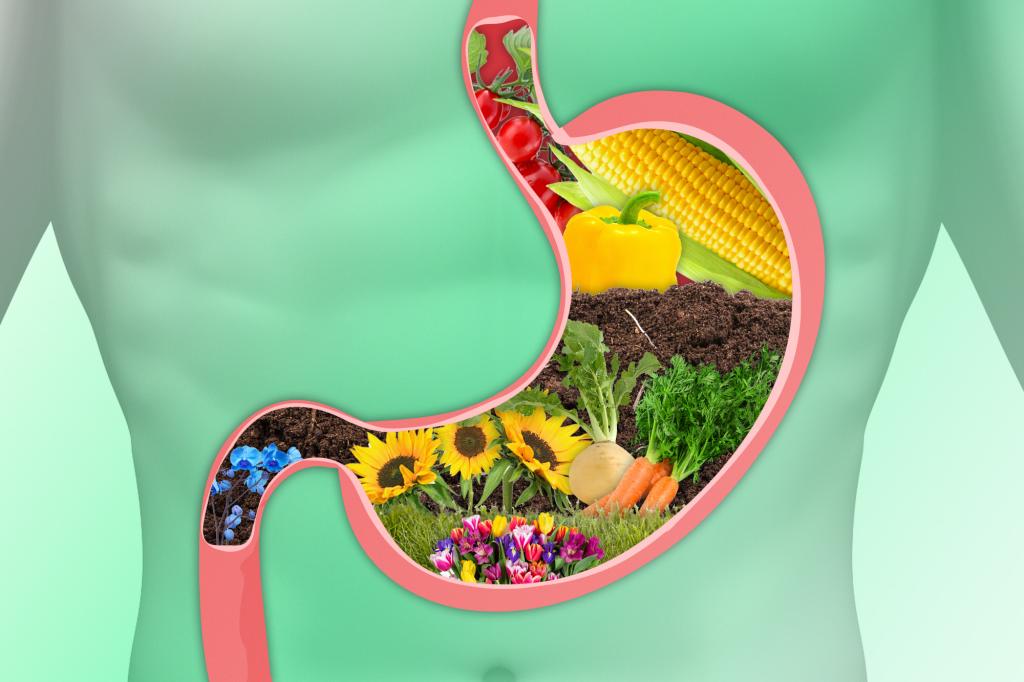Your gut microbiome is begging for more dirt, more hugs — and a whole lot less disinfectant.
That’s according to Dr. Wendy Johnson, a family physician, writer and public health professor, who warns that if you’re not nurturing the bacteria in your belly like a garden, you could be setting yourself up for serious trouble.
“We depend on our microbiome for critical functions that our own digestive system can’t perform alone,” she told The Post.
That includes breaking down fiber, regulating metabolism, supporting nutrient absorption, synthesizing vitamins, controlling inflammation and fighting off pathogens. Your gut even has a direct line to your brain chemistry.
So when your microbiome gets thrown off balance, the fallout can ripple through your entire body.
“An unhealthy microbiome can contribute to problems with digestion and inflammatory conditions in the gut,” Johnson said, “but also obesity, metabolic disorders, diabetes, depression, dementia, anxiety, allergies, asthma and even autoimmune disorders.”
While supplements like pre-, pro- and post-biotics are heavily hyped for supporting gut health, Johnson doesn’t buy the buzz. She calls them “weak substitutes for enriching our whole ecosystem.”
“What if instead of expensive supplements, we tried to rebuild or ‘reseed’ or ‘rewild’ our microbiomes in more natural ways?” she said.
In her new book, “Kinship Medicine: Cultivating Interdependence to Heal the Earth and Ourselves,” Johnson lays out exactly how to do that — drawing on lessons from her Italian grandparents, who farmed, fished and foraged their way through life.
“As a doctor, I’ve followed the evolving research on the microbiome,” she explained. “It’s increasingly clear that the lifestyle I inherited from my mother and grandparents is supported by a growing body of evidence as the best way to nurture a healthy microbiome.”
Johnson gave The Post a peek at her book and revealed five easy ways to “reseed” your gut — no pricey pills or potions required.
#1: Get into nature and breathe.
“Walking and breathing in the woods benefits your microbiome in several ways,” Johnson said.
For starters, fresh air has friendly microbes like mycobacterium vaccae, which are known to boost your “feel-good” hormones in the brain and reduce inflammation.
“In many places you also will breathe in phytoncides, which are antimicrobial plant chemicals found especially in conifers,”Johnson added, noting these forest compounds help kickstart a healthy immune response.
And don’t forget the workout: “Being physically active in nature lowers cortisol levels and improves blood flow, gut motility and immune regulation, all of which support a healthy microbiome and healthy digestion,” Johnson said.
#2: Go hug someone.
Turns out, human contact is good for your gut.
“People in close-knit social networks have higher microbial diversity, which correlates with a healthy microbiome,” Johnson said.
Every time you hug, kiss, cuddle or even just hang out with someone, you’re swapping microbes. That’s especially good news if your circle eats well and has healthy microbiomes.
“Having more social support also lowers stress and nurtures a healthy gut-brain axis by stimulating neurotransmitters like oxytocin and serotonin,” Johnson explained.
These brain chemicals help keep you calm, while high cortisol — the body’s main stress hormone — can trigger inflammation that throws your microbes out of balance.
A bonus for animal lovers: “Having a dog or cat also helps keep your microbiome diverse and reduces stress,” Johnson said.
#3: Get your hands dirty.
“Gardening, weeding, digging and composting are all ways to physically recharge your microbiome,” Johnson said.
Playing in the dirt means you’re soaking up good bacteria and fungi through your lungs and skin. Plus, gardening reduces stress and cortisol levels — giving your body’s ecosystem a serious boost.
“If you don’t have a garden where you live, look for community gardens, or volunteer with a local botanical garden or conservation group,” Johnson recommended.
#4: Eat local and plant-based.
“For a strong and diverse microbiome, a plant-based diet is definitely the way to go,” Johnson said.
If you want to supercharge your diet, opt for locally grown, fresh produce whenever possible.
“Fresher foods retain more natural surface microbiota,” Johnson said. “They also often have less packaging and therefore less risk of microplastic contamination.”
#5 Cultivate your home ecosystem.
“Your home microbiome is your home ecosystem — in constant communication with your internal microbiome and internal ecosystem,” Johnson said.
That means maintaining microbial balance in your home is essential.
The problem, Johnson said, is that many commercial cleaners, detergents and pesticides contain broad-spectrum biocides that wipe out both good and bad bacteria.
Overusing these harsh chemicals can also irritate the skin and contribute to antibiotic resistance.
Strongly scented soaps, detergents and fabric softeners, meanwhile, can strip the skin’s natural oils and alter its pH balance, creating a hostile environment for beneficial microbes.
“Natural, fragrance free, biodegradable cleaning products are less aggressive towards beneficial bacteria and tend to be gentler on your microbiome and endocrine system as well,” Johnson said.
“Even keeping your windows open (if your air quality isn’t bad) helps support microbial diversity,” she added.
Read the full article here


